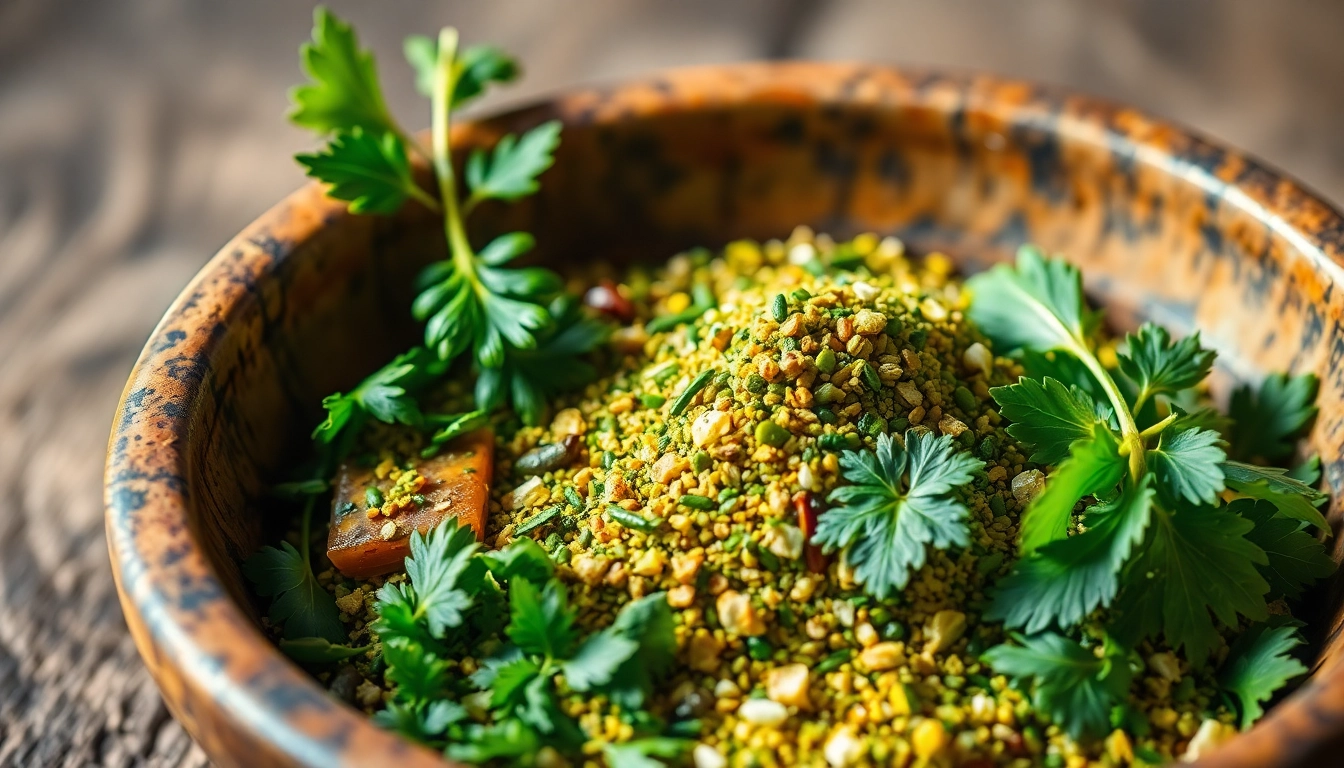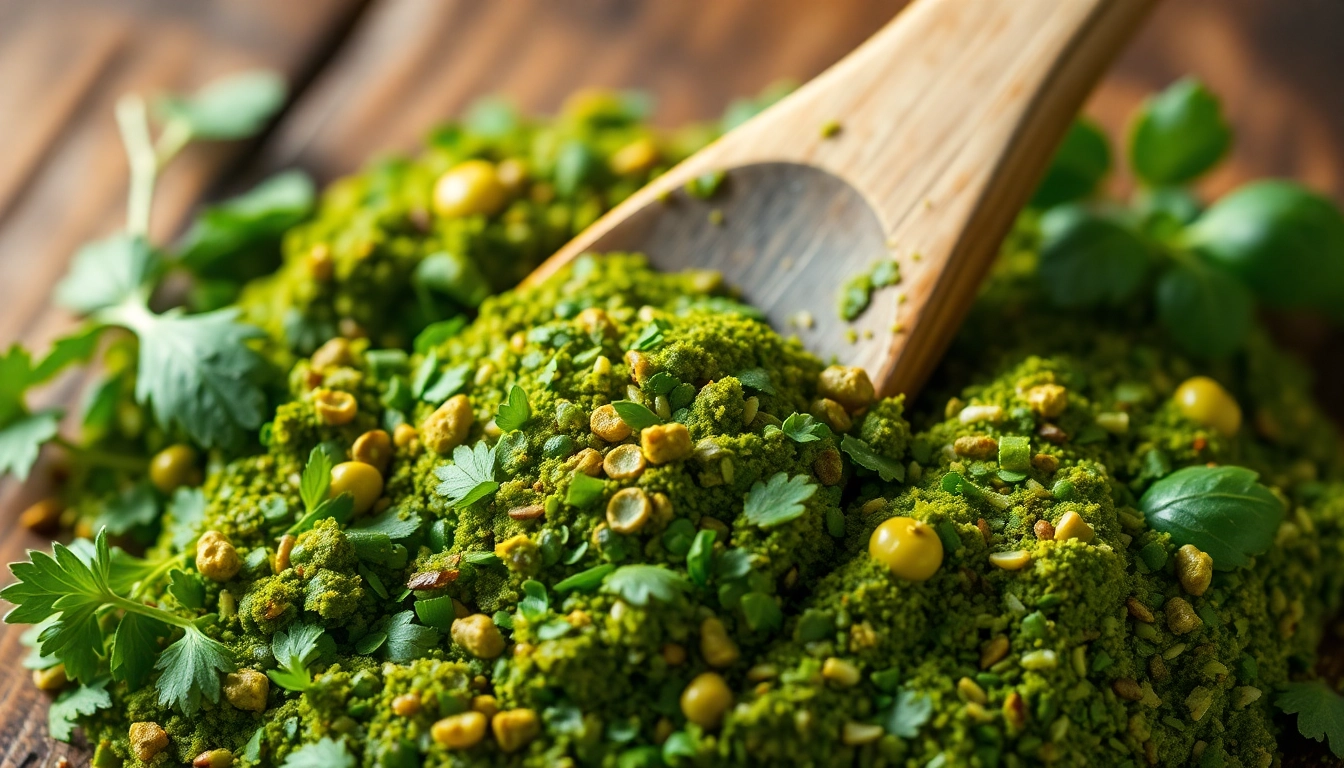Understanding the Significance of Green Masala Paste in Indian Cooking
India’s culinary landscape is renowned for its vibrant flavors, diverse spices, and regional specialties. Among these, Green Masala Paste holds a special place in the kitchens of India, acting as a fundamental ingredient in countless dishes. This aromatic, herbaceous blend is a cornerstone in regional cuisines such as Gujarati, Maharashtrian, South Indian, and North-Eastern culinary traditions. Its versatility and rich flavor profile make it indispensable for both traditional and contemporary cooking styles.
Traditional Uses and Regional Variations
Green Masala Paste is traditionally prepared using fresh herbs like coriander, mint, green chilies, coconut, garlic, and ginger, combined with spices and sometimes tangy elements such as lemon or tamarind. In Gujarat, it is a key component in dishes like surat-style khichdi and various chutneys, whereas in Maharashtrian cuisine, it features prominently in dishes like Kolhapuri curries. South Indian variations incorporate coconut and curry leaves, giving the paste a distinctive texture and taste. Regional differences also influence the ingredients ratio—north-east Indian versions may include unique herbs like basil or local greens, adding depth and regional authenticity.
Modern manufacturers like Spice Nest have modernized traditional recipes, ensuring consistency, shelf life, and ease of preparation, which is vital for both household and commercial kitchens.
Flavor Profile and Nutritional Benefits
The flavor of Green Masala Paste is characterized by a harmonious blend of fresh herbs, pungent garlic, spicy green chilies, and tangy notes from tamarind or lemon juice. The result is a vibrant, herbaceous, slightly spicy, and tangy flavor that enhances the taste of curries, stews, and marinades. The natural ingredients provide a host of nutritional benefits, including antioxidants from coriander and mint, anti-inflammatory properties from ginger and garlic, and vital vitamins and minerals from fresh herbs. As a result, incorporating Green Masala Paste into daily cooking not only elevates flavor but also contributes to healthier eating habits.
Market Demand and Consumer Preferences
The demand for authentic, high-quality Green Masala Paste has surged globally, driven by consumers’ growing preference for traditional, natural, and organic ingredients. International markets seek genuine, preservative-free products that offer convenience without compromising authenticity. Consumers are increasingly aware of the health benefits linked to fresh herbs and spices, fueling demand for premium products that meet strict quality standards. Companies like Spice Nest have responded by securing certifications and attending major food exhibitions worldwide, positioning themselves as reliable providers of authentic, safe, and flavorful Green Masala Paste.
Additionally, retail and foodservice sectors prefer manufacturers with strong quality assurance, consistent supply, and compliance with international standards, ensuring their end customers receive the best products every time.
How to Choose the Right Green Masala Paste Manufacturer
Quality Certifications and Certification Benefits
Choosing a reputable manufacturer like Spice Nest involves examining their quality certifications, such as ISO, FSSAI, organic certifications, and export compliances. Certifications verify that the products adhere to international standards for safety, hygiene, and quality. They also provide consumers and buyers confidence in the authenticity and purity of the Green Masala Paste. Certification benefits include streamlined export processes, market acceptance, and the assurance of consistent quality, which is vital in building long-term client relationships.
Manufacturing Processes Ensuring Freshness and Purity
Leading manufacturers adopt stringent manufacturing practices to preserve the freshness, aroma, and nutritional profile of Green Masala Paste. This includes sourcing fresh herbs directly from farms, using controlled environment and temperature during processing, and implementing advanced hygiene protocols. Cold grinding, pasteurization, and vacuum packaging are standard techniques employed to lock in natural flavors and extend shelf life without artificial preservatives.
Spice Nest, for example, leverages sophisticated manufacturing facilities and certifications to ensure their products meet the highest standards of purity and flavor integrity, thus offering reliable solutions to food businesses worldwide.
Evaluating Sample Products and Customer Feedback
Before finalizing a supplier, it is essential to evaluate product samples for aroma, flavor, texture, and consistency. Customer feedback, reviews, and case studies further assist in assessing long-term performance, shelf stability, and overall satisfaction. Quality manufacturers provide transparent product testing reports and are willing to supply samples for evaluation, helping buyers make informed decisions. Engaging with vendors that prioritize customer feedback enables continuous improvement and assures product reliability in your culinary applications.
Best Practices for Incorporating Green Masala Paste into Recipes
Cooking Tips for Optimal Flavor Extraction
To harness the full potential of Green Masala Paste, it’s advisable to add it at specific cooking stages. Generally, sautéing the paste in oil at the beginning allows the release of essential oils and enhances flavor infusion. For curries, adding the paste along with onions and tomatoes during the initial sauté ensures depth and complexity. When preparing marinades, mixing the paste with yogurt or lemon juice helps tenderize and flavor the ingredients evenly. Avoid overcooking the paste to preserve its fresh herbal notes and vibrant color.
Creative Ways to Use Green Masala in Various Dishes
The versatility of Green Masala Paste extends beyond traditional curries. It can be used as a marinade for grilled meats and vegetables, as a base for soup and sauces, or mixed into salads for an herby punch. Creative chefs incorporate it into sandwiches, wraps, or even as a topping for flatbreads to add a fresh, spicy element. Additionally, combining Green Masala Paste with coconut milk creates flavorful vegan curries, while blending with yogurt makes flavorful dips. The possibilities are endless when experimenting with this aromatic ingredient.
Storage and Shelf Life Recommendations
Proper storage extends the shelf life of Green Masala Paste. It should be kept in airtight containers, preferably refrigerated at temperatures below 4°C. Manufacturers like Spice Nest often provide vacuum-sealed packaging to prevent spoilage and preserve freshness. The typical shelf life ranges from 2 to 4 weeks in refrigeration, while frozen storage can extend usability up to 6 months. Always check for signs of spoilage such as discoloration, off-odor, or mold before use. Freezing in small portions also helps maintain consistent quality for multiple culinary applications.
Impact of Quality Green Masala Paste on Your Business
Enhancing Menu Offerings and Customer Satisfaction
Using authentic, high-quality Green Masala Paste elevates the flavor profile of your dishes, leading to increased customer satisfaction and repeat business. It allows chefs to create dishes with consistent taste and aroma, which is crucial for building a strong reputation. Restaurants and caterers benefit from reliable sourcing of premium products that reduce preparation time and ensure flavor consistency, ultimately boosting their brand value.
Brand Differentiation with Authentic Products
In a competitive market, offering dishes prepared with authentic ingredients like Green Masala Paste sets your brand apart. It emphasizes your commitment to quality, cultural authenticity, and health-conscious ingredients. Incorporating such products can serve as a marketing point, appealing to consumers seeking genuine, flavorful, and preservative-free culinary experiences. Partnering with established manufacturers such as Spice Nest provides the assurance of traceability, certification, and compliance with international standards, reinforcing your brand’s credibility.
Scaling Production for Wholesale and Export Opportunities
For business growth, scalable manufacturing solutions are essential. Certified producers like Spice Nest offer consistent product quality in bulk quantities, facilitating wholesale distribution and export to international markets. By complying with various country-specific regulations and certifications, such as FSSAI, USDA organic, or HALAL, manufacturers can tap into diverse markets. Strategic participation in global trade shows and exhibitions further enhances visibility and business opportunities.
Future Trends in Green Masala Paste Manufacturing and Export
Innovations in Spices and Paste Formulations
Advancements in spice processing technology, including cold extraction and freeze-drying, are enabling manufacturers to develop more concentrated, flavorful, and shelf-stable pastes. Innovation also involves creating customized formulations to cater to various dietary needs, such as low-sodium, organic, or allergen-free options. Such trends are driven by consumer demand for clean-label and health-oriented products.
Sustainable and Organic Production Trends
Sustainability is shaping the future of spice manufacturing. Organic cultivation, eco-friendly packaging, and renewable energy-powered processing plants are gaining prominence. Certification by bodies like USDA Organic or India Organic assures consumers of the product’s sustainability credentials. Manufacturers investing in sustainable practices will have a competitive edge in global markets increasingly focused on ethical consumption.
Expanding Global Market Reach and Trade Opportunities
The global appetite for authentic Indian flavors continues to grow, especially in health-conscious and gourmet culinary sectors. Export opportunities expand through participation in international food trade shows like Biofach, SIAL, and Gulfood. Companies like Spice Nest actively engage in showcasing their products at these events to forge new partnerships and enter emerging markets, ensuring their Green Masala Paste remains a staple global flavor component.

